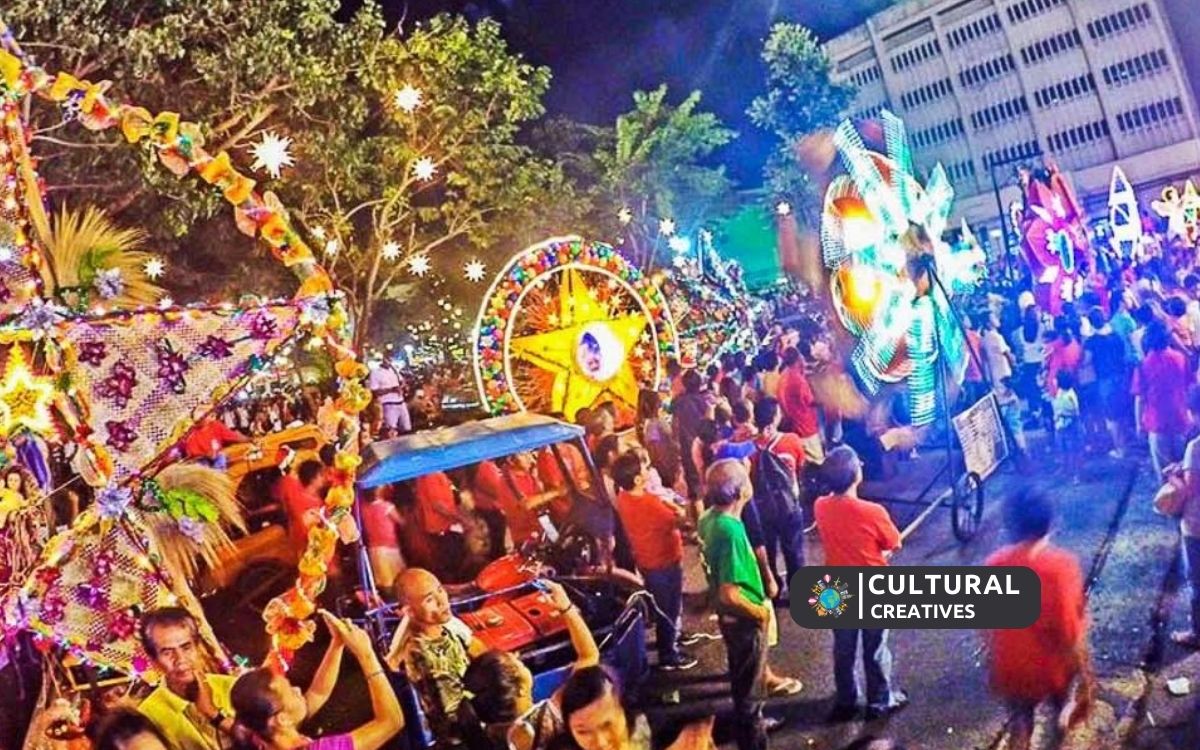The Tarlac Festival, known as the Melting Pot Festival, celebrates the province’s cultural diversity. This event typically takes place in May, coinciding with the founding anniversary of Tarlac.
Tarlac, a province located in the Central Luzon region of the Philippines, hosts a showcase of its rich heritage and unity through the Melting Pot Festival. This annual celebration features an array of colorful parades, traditional dance performances, local cuisine, and agricultural product exhibitions that highlight the unique blend of ethnic groups residing in the area.
Visitors can expect to experience the warmth and hospitality of the Tarlaqueños while enjoying the diverse cultural activities. The festival not only fosters local pride but also attracts tourists, contributing to the regional economy. With its multi-ethnic roots, the Melting Pot Festival embodies the harmonious coexistence of various cultures and traditions within the province of Tarlac.
Geographical And Cultural Backdrop

Tarlac’s position as a melting pot of the northern Philippines is not just due to its strategic location at the crossroads of Luzon’s travel arteries. The province’s terrain, marked by lush plains and rugged mountain ranges, creates a diverse tapestry that shapes the cultural mosaic of the region. Ethnically, Tarlac is a haven of multiculturalism, home to Ilocano, Kapampangan, and Pangasinense communities, alongside its indigenous groups. This confluence of cultures is best manifested in the vivid celebrations that dot the province’s calendar, each festivity paying homage to a facet of Tarlac’s rich heritage.
The Significance Of Festivals In Tarlac’s Social Fabric

In Tarlac, festivals are not merely annual events but the lifeblood of its communal identity. Rituals and parades transcend mere entertainment; they are a platform for building a sense of belonging and community pride. Agricultural fairs, religious feasts, and historical commemorations form the essential threads in the fabric of Tarlac’s society. Through vivid street dancing, local cuisine showcases, and religious processions, the people of Tarlac honor their ancestors, give thanks for their blessings, and celebrate the fertility of their lands. These festivals hold the power to unite disparate groups, nurturing a collective spirit and shared heritage that stands strong amidst the ever-changing modern landscape.
Historical Evolution Of Tarlac’s Festivals
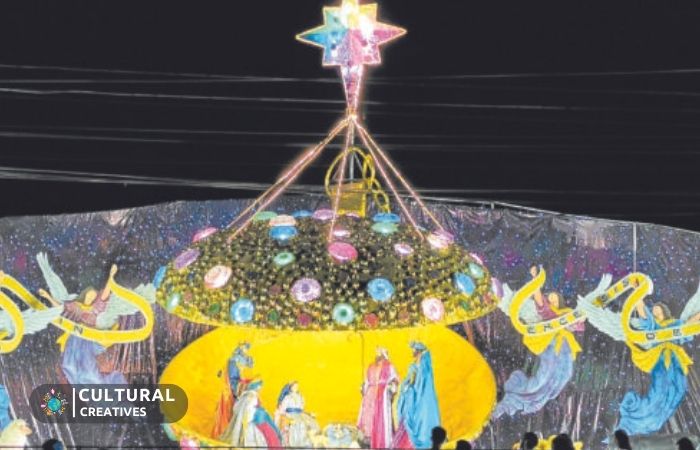
The Historical Evolution of Tarlac’s Festivals tells a story teeming with cultural richness and diversity. Tarlac Province, situated in the heart of the Philippines’ largest island, Luzon, has cultivated a variety of festivals that not only serve as tourist attractions but also act as living museums of the region’s dynamic history. These festivals have developed from indigenous traditions, foreign influences, and historical events that have left indelible marks on the local culture. In this exploration, we delve into the transformation of Tarlac’s festivals and celebrate their continuous evolution.
Origins And Influences On Local Celebrations
The genesis of Tarlac’s festivals lies in the pre-colonial traditions of various ethnic groups that originally inhabited the region. Among the primary influences were the Aeta, Ibaloi, and Pangasinan communities, each contributing unique elements to the celebratory tapestry. The arrival of Spanish colonizers in the 16th century introduced Christian saints’ feast days, blending with native rituals to create hybrid celebrations.
Agricultural practices also played a significant role, with thanksgiving festivities marking important milestones such as planting and harvest seasons. These occasions featured ritual dances, music, and communal feasts that epitomized the spirit of unity and gratitude.
Transformation Of Traditional Festivities Over Time
As time progressed, Tarlac’s festivals evolved, absorbing elements from historical events, such as revolutions and community triumphs, thereby reflecting the changing societal ethos. The American and Japanese occupations left distinct cultural imprints, further diversifying the celebrations.
One of the most noteworthy transformations is the change in scale and spectacle of these festivals. What were once intimate gatherings have grown into grandiose events that seek to both preserve tradition and promote tourism. These festivals now feature colorful parades, street dancing, and beauty pageants, alongside traditional practices such as the ‘panagyaman’, or thanksgiving.
Modern influences and technology have also been integrated, with digital media playing an increasing role in the documentation and dissemination of these cultural spectacles. Despite these changes, the central themes of unity, cultural pride, and historical remembrance remain at the core of Tarlac’s festivities.
The Melange Of Tarlac Festivals
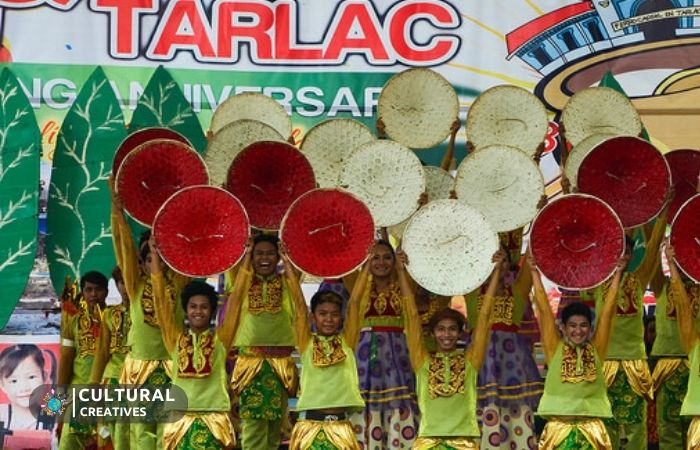
This is a place where color, culture, and heritage come together in a joyous celebration of life. The province of Tarlac in the Philippines is known for its rich cultural diversity, which is mirrored in its wide array of festivals. Each year, tourists and locals alike are treated to a spectacular melange of events that highlight the province’s traditions, history, and agricultural victories. Let’s dive into the exuberant world of Tarlac festivals and explore what makes each one unique.
Overview Of Major Festivals
The province of Tarlac boasts an incredible lineup of major festivals that captures the spirit of its people. These major festivities are not just a mere display of fun and entertainment, but they are deeply rooted in Tarlac’s history, beliefs, and way of life.
- Chicharon Iniruban Festival – A celebration of the province’s culinary delights, focusing on two local snacks: chicharon (pork cracklings) and iniruban (local cake).
- Belenismo sa Tarlac – A unique festival where the community competes in creating elaborate Belen (Nativity) displays, igniting the festive spirit of Christmas.
- Melon Festival – Held in May, this event pays homage to the bountiful harvest of melons and other agricultural products, showcasing Tarlac’s agricultural prowess.
Seasonal Celebrations Throughout The Year
Tarlac’s festivities span the entire calendar, ensuring that at any time of the year, there’s something to witness and partake in. Seasonal celebrations reflect the province’s dynamic culture and the locals’ harmonious relationship with the land and their faith.
| Month | Festival | Description |
|---|---|---|
| January | Kasanag Festival | A festival of lights that symbolizes hope and guidance. |
| March-April | Aguman Sanduk | A New Year’s Day festivity known for its colorful and humorous cross-dressing parade. |
| June-July | Singkaban Festival | Highlights the artistry and craftsmanship of Tarlaqueños through bamboo art. |
| December | Christmas Celebration | Packed with colorful lanterns and joyous holiday events. |
Each festival in Tarlac paints a story of its people—timeless, rich in tradition, and full of life. They offer an immersive experience into the heart and soul of the region, promising memories that will last a lifetime.
Beling-belang Festival: A Kaleidoscope Of Culture
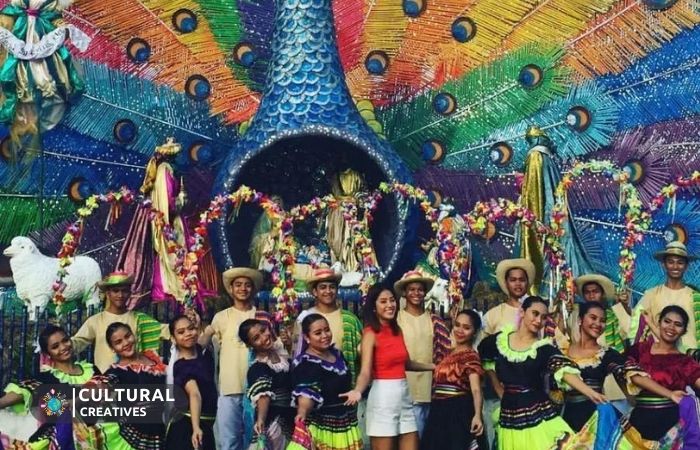
Experience the tapestry of traditions at the Beling-belang Festival, held in the heart of Tarlac. This remarkable event is not just a festivity; it’s an immersive journey through the cultural essence of the province. Rich in history and brimming with lively performances, the festival draws locals and travelers alike. Its colorful activities and traditional displays create a mosaic of cultural expression that is both educational and entertaining.
The History And Meaning Of Beling-belang
The Beling-belang Festival traces its roots deep into the history of Tarlac. Named after the Beling-belang tree, a native species in the region, this festival symbolizes growth, resilience, and the lush biodiversity of the province. It commemorates the unique heritage and the unity of Tarlac’s multi-ethnic community.
The term ‘Beling-belang’ reflects the patchwork of cultures within Tarlac, analogous to the diverse patterns found on the local textiles. Each year, the festival proudly celebrates the harmonic blend of indigenous tribes, migrant settlers, and foreign influences that have shaped the province’s identity.
Cultural Performances And Activities
During the Beling-belang Festival, the streets come alive with a series of spectacular events and activities. Participants don traditional costumes, embodying the varied cultural narratives of the province. Highlights include:
- Dance Performances: Ensembles showcase traditional and contemporary dances, illustrating stories from Tarlac’s history.
- Local Cuisine: Food stalls offer a feast of regional delicacies, allowing visitors to indulge in authentic culinary experiences.
- Arts and Crafts: Artisans display handicrafts, weaving demonstrations, and art exhibits, reflecting Tarlac’s rich artistic legacy.
- Music: Live bands and indigenous music performances set the rhythm of the festival, echoing the province’s diverse soundscape.
| Time | Event | Location |
|---|---|---|
| Morning | Street Dancing Parade | Main Avenues |
| Afternoon | Culinary Fair | Public Plazas |
| Evening | Cultural Show & Fireworks | Town Square |
Interactive workshops and storytelling sessions provide insight into the ancestral traditions, appealing to visitors of all ages. The festival exemplifies a magnificent display of cultural pride and community spirit, reinforcing the importance of preserving Tarlac’s historical and ethnic diversity.
Chicharon Iniruban Festival: A Culinary Extravaganza
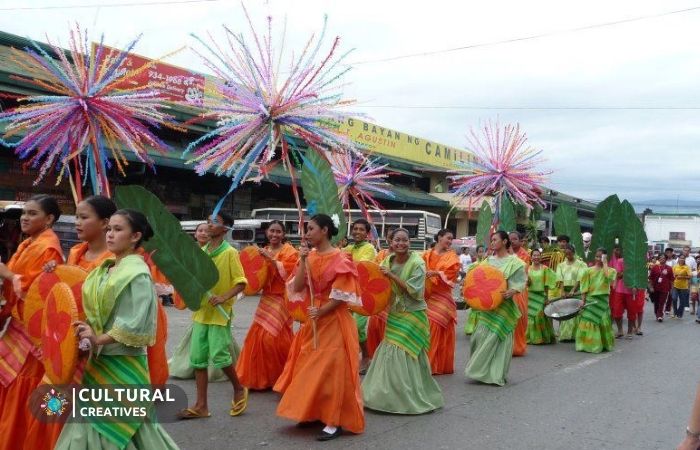
Welcome to a gastronomic journey where tradition meets taste at the Chicharon Iniruban Festival. This annual culinary extravaganza is hosted in the heart of Tarlac, celebrating the rich culinary heritage of the province with festivities. Local residents and visitors alike immerse themselves in a flavorful celebration of Tarlac’s treasured delicacies: Iniruban and Chicharon. Delighted taste buds and delighted festival-goers—this event promises to serve both in abundance!
Iniruban And Chicharon: Tarlac’s Gastronomic Treasures
The Chicharon Iniruban Festival pays homage to two of Tarlac’s iconic eats. The Iniruban, also known as kamoteng kahoy, is a velvety purple delicacy derived from a local variety of cassava, celebrated for its delightful combination of sweet and savory flavors. Chicharon, the crispy pork rind snack that has become a local and international sensation, is made all the more special in the province with its unique preparation methods that create an irresistible crunch.
Tarlac’s very own Iniruban entices with its exotic color, smooth texture, and unique taste—an experience that locals are proud of and visitors eagerly seek out. Complementing this is the ever-popular Chicharon, a staple at Filipino gatherings and a testament to the culinary skill and creativity of Tarlac’s people. It is not just food; it is a cultural immersion that connects people to the roots of the province.
Festival Highlights And Competitions
The Chicharon Iniruban Festival is a hive of activity, with each event more exciting than the last. Revelers can look forward to a palette of activities designed to celebrate the local flavors and showcase the culinary craftsmanship of the region.
- Grand Parade: The festival kicks off with a colorful parade featuring floats that are as visually appealing as the snacks are tasty.
- Cooking Demonstrations: Master chefs and cooking enthusiasts share their secrets to making the perfect Iniruban and Chicharon. Engage your senses as the aroma of traditional cooking fills the air.
- Culinary Competitions: Get ready for the sizzle and excitement as local cooks vie for the title of Best Iniruban and Chicharon. Judged for taste, texture, and originality, this competition is a crowd-pleaser.
- Street Dancing: Immerse yourself in Tarlac’s culture with dance performances that tell the story of the Iniruban and Chicharon.
- Market Fair: Stroll through the market fair, a bustling hub where artisans and vendors sell a variety of goods, including the freshest ingredients to take home the taste of Tarlac.
Among the hustle and bustle of cook-offs and music, the Culinary Competitions shine as a festival highlight. Budding chefs and seasoned professionals go head-to-head, their culinary creations pushing the boundaries of taste and presentation. Attendees are not mere spectators but actively participating judges as they taste test and cast votes for their preferred contenders. The competition culminates in an award ceremony where winners bask in glory and guests partake in the feast.
Make sure not to miss this culinary showcase where the humble Chicharon and the exotic Iniruban rise as stars — where flavor, culture, and tradition create a feast for the senses at the Chicharon Iniruban Festival.
Malatarlak Festival: The Color And Splendor Of Tarlac
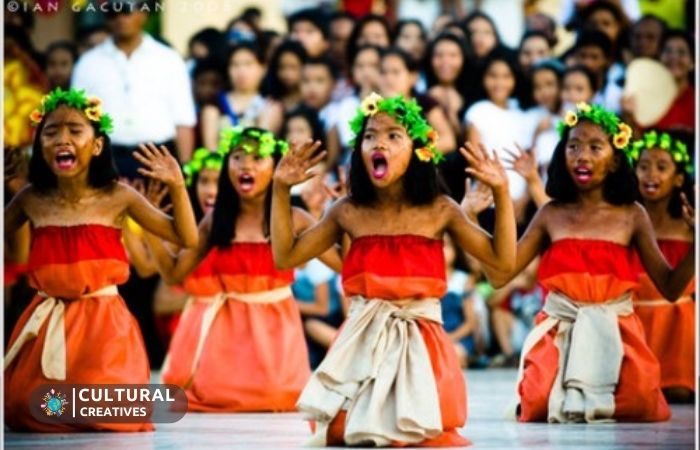
Unfolding in the province of Tarlac, Malatarlak Festival bursts into a kaleidoscope of colors and revelry. Each year, locals and tourists converge to celebrate the rich cultural tapestry of the region, awash with a unique blend of tradition and modern festivity. This spectacular event pays homage to the province’s ancestry and showcases an electrifying spectacle of unity and artistic expression.
Tribute To The Aeta Ancestors
The Malatarlak Festival stands as a poignant homage to the Aeta community, the indigenous people of Tarlac. Rooted deep within the province’s history, this festival is enriched with ancient Aeta customs, highlighting their influential presence.
- Traditional Aeta rituals
- Folk songs and indigenous dances
- Exhibits showcasing Aeta craftsmanship
Visitors are immersed in a profound cultural experience, providing a glimpse into the Aeta way of life, thus fostering a deeper understanding and respect for these original stewards of the land.
The Famous Street Dancing And Float Parade
The Malatarlak Festival reaches its climax with the famous street dancing and float parade, a visual feast that captivates all senses. Local contingents adorned in costumes take to the streets with choreographed dances that narrate stories of their heritage and dreams.
| Highlight Event | Description | Time |
|---|---|---|
| Street Dancing | Performers dance to the rhythmic drumbeats and indigenous music. | Afternoon |
| Float Parade | Artistically-designed floats representing various localities and themes. | Evening |
The air fills with the sound of beating drums, as dancers exhibit their passion and skill, entwining modern dance with ethnic motifs. Elaborate floats offer an enchanting procession, revealing Tarlac’s creative spirit and communal heart.
Religious Festivities: A Testament To Faith And Unity
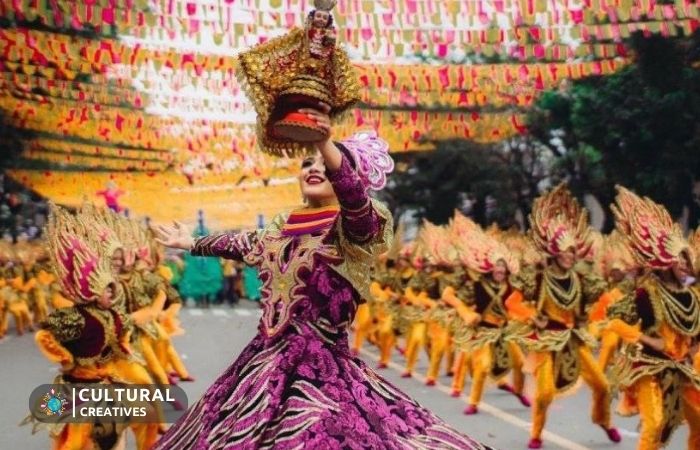
The fabric of Tarlac’s culture becomes most evident during its religious festivals, which stand as a testament to the deep faith and unity of its people. These celebrations, steeped in religious traditions, not only serve as spiritual milestones but also as an opportunity for the community to come together, transcending the ordinary into something truly extraordinary. Let’s delve into how these festivities merge the sacred with the secular, fostering a sense of harmony and shared belief across the region.
Celebration Of Patron Saints: A Blend Of The Sacred And Secular
In Tarlac, the celebration of patron saints epitomizes the seamless integration of sacred reverence and secular joy. Each barangay pays homage to its chosen patron saint, honoring their virtues and seeking their blessings through a series of events. The highlight being the fiestas, where religious solemnity meets festive exuberance.
- Community Banquets: A time for sharing blessings and enjoying local delicacies at communal tables.
- Cultural Performances: Theatric representations and folk dances that narrate the stories of patron saints and local history.
- Firework Displays: The night sky ablaze with colors, symbolizing the jubilant spirit of the community.
These festivities not only strengthen community bonds but also preserve Tarlac’s rich cultural heritage, passing down time-honored traditions to future generations.
Processions, Novenas, And The Role Of The Church
The church plays a central role in Tarlac’s religious festivals, guiding the spiritual journey of the faithful. The novenas and processions are more than just rituals; they are profound expressions of piety and reflection.
| Event | Significance |
|---|---|
| Novenas | Nine days of prayer that prepare the community spiritually, leading up to the main event of the fiesta. |
| Processions | Devotees take to the streets, bearing revered images and relics as a public declaration of faith and devotion. |
Such events encapsulate the collective aspirations and beliefs of the people. They draw individuals from different walks of life into a common spiritual fold, reinforcing the foundations upon which the local church community thrives.
Arts And Crafts Of Tarlac’s Festive Occasions
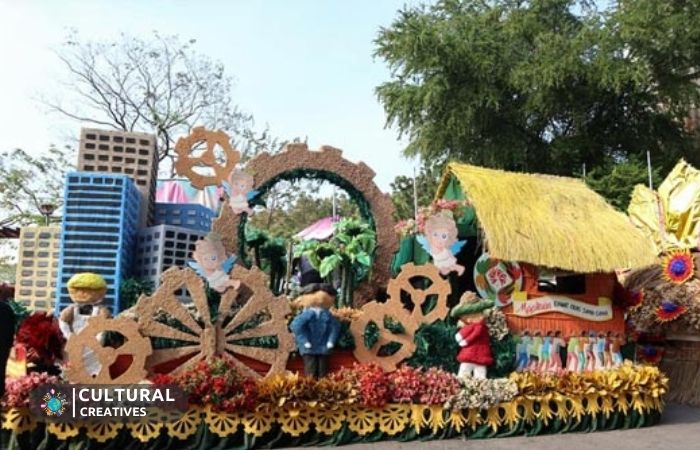
The province of Tarlac, located in the heart of Luzon in the Philippines, is not only known for its agricultural vistas but also for its rich cultural tapestry, highlighted through festivals and their accompanying arts and crafts. These festive occasions are where local artisans showcase their creativity and cultural heritage, offering a visual feast and an insight into the region’s artistic diversity. As the atmosphere buzzes with festivity, the arts and crafts become a bridge connecting the past with the present, the traditional with the contemporary.
Handicrafts And Their Role In Festivals
Handmade crafts are the soul of Tarlac’s festivals, each piece telling a story of skillful artistry passed down through generations. During festivals, these handicrafts do not merely serve as decorations; they play a crucial role in preserving the identity and cultural practices of the Tarlac community.
- Weaving: Banig (mat) and basket weavers transform simple materials like pandan and bamboo into intricate and colorful designs that symbolize unity and togetherness.
- Woodcraft: Carpenters and sculptors carve local wood into religious icons and everyday items, emblematic of Tarlac’s spiritual and practical aptitudes.
- Pottery: The age-old tradition of creating burnay jars reflects Tarlac’s ties to earth and water, elements central to its agricultural lifestyle.
During these festive times, the streets come alive with these handicrafts, with each festival parade displaying the quintessence of Tarlac’s artisanship. They also serve as a conduit for economic growth, with artisans selling their work to visitors and collectors, generating income for the local economy.
Workshops And Exhibitions Promoting Local Artisans
To further encourage and celebrate local talent, various workshops and exhibitions take place alongside the Tarlac festivals. These events serve not only as a showcase but also as an interactive platform for artisans to engage with the public and for enthusiasts to learn the crafts first-hand.
| Workshop/Exhibition | Description | Impact |
|---|---|---|
| Traditional Weaving Workshops | Interactive sessions on banig and textile weaving, highlighting patterns unique to Tarlac. | Revitalization of interest in local weaving practices and skill transfer to younger generations. |
| Woodcarving Demonstrations | Live demonstrations by master carvers, detailing the intricacies of religious and cultural sculptures. | Promotion of woodcarving as an art form and support for local artisans. |
| Pottery Making Sessions | Experiential learning in pottery, showcasing traditional methods and modern techniques. | Encouragement of hands-on experience and appreciation for the art of pottery. |
Moreover, exhibitions allow artisans to display their finest work, often leading to recognition and patronage that extends beyond the festival season. Galleries and community centers become hubs of artistic activity, inviting attendees to immerse themselves fully in the local culture. By facilitating these opportunities, Tarlac not only preserves its cultural legacy but also sets the scene for its artisans to thrive and innovate.
Each festival in Tarlac is an open invitation to discover the rich arts and crafts of the region—a celebration of tradition, skill, and community spirit that continues to fascinate and inspire.
Economic And Tourism Impact Of Festivals
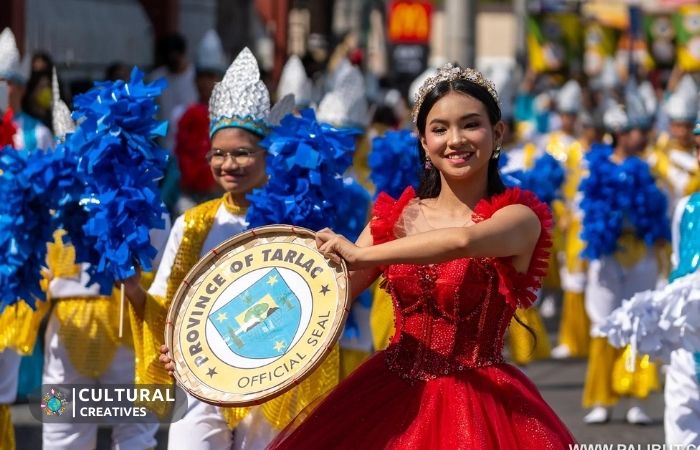
The vibrancy of cultural festivities has a profound influence on economic growth and the tourism landscape. As we explore the bustling scenes of Tarlac Festival, it becomes evident that such events are more than just a display of tradition and jubilation. They are pivotal in reinvigorating local economies and positioning destinations like Tarlac on the global tourism map.
Boosting Local Economy Through Festivities
One of the most immediate impacts of festivals is the stimulation of the local economy. The Tarlac Festival, synonymous with an explosion of color, culture, and community spirit, spawns numerous opportunities for local businesses. Vendors, artisans, and performers see a surge in demand for their offerings during the festivities.
- Increased Sales for Local Vendors: Markets teem with visitors looking to purchase local crafts and souvenirs, bolstering sales for small businesses.
- Job Creation: The need for extra help during the festival period leads to temporary employment opportunities for residents.
- Gastronomy Boom: An uptick in food consumption at local restaurants, street food stalls, and pop-up eateries as festival-goers indulge in regional cuisine.
Furthermore, the ripple effect extends to various sectors such as transportation, accommodation, and entertainment, ensuring a comprehensive economic enhancement for Tarlac and its inhabitants.
Festivals As A Draw For Tourism
Tarlac’s festive allure is not just a treat for the senses, but also a magnet for tourists. Festivals act as a cornerstone for the region’s tourism strategy, leveraging the allure of cultural heritage to attract visitors from around the world.
- Marketing Cultural Uniqueness: Festivals showcase the distinct character and traditions of Tarlac, setting it apart as a unique travel destination.
- Cross-Promotional Opportunities: Events provide a platform for promoting other attractions and activities in the region, enticing tourists to extend their stay.
- Media Attention: The visual spectacle of festivals garners media coverage, thus reaching a broader audience and encouraging future visitations.
As tourists flock to the region, they not only contribute to the tourism sector but also disseminate the cultural richness of Tarlac to wider circles, fueling a perpetual cycle of interest and visitation.
Fostering Community And Preserving Heritage
Festivals As A Platform For Community Engagement
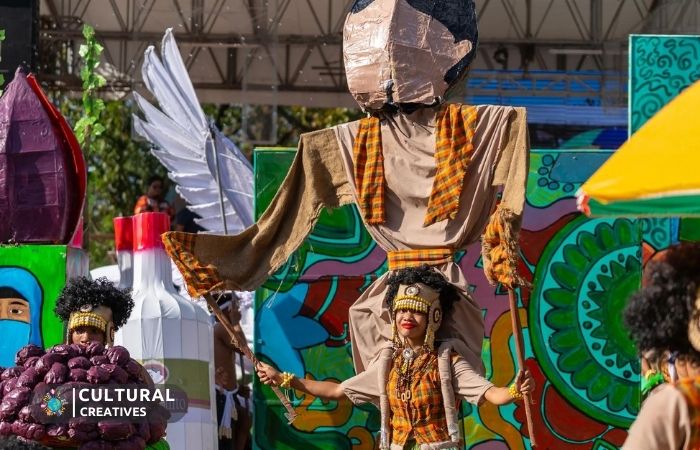
The Tarlac Festival serves as a catalyst for community interaction, knitting together the various threads of society into a tightly woven tapestry of unity and collaboration. The celebration brings every sector together, creating a platform where children, adults, and the elderly can share stories, laughter, and the joy of their togetherness.
- Street Dances – Locals participate in choreographed routines, embodying the province’s myths and stories.
- Food Fairs – Exhibits promote local cuisine, offering a taste of Tarlac’s culinary diversity.
- Arts and Craft Workshops – Artisans teach traditional crafts, inspiring a new generation to continue these age-old practices.
Such activities encourage active participation and strengthen community ties, essential elements for nurturing a socially cohesive environment.
The Role Of Festivals In Cultural Preservation And Education
Festivals like those in Tarlac play a crucial role in preserving the unique cultural identity of the region. These events act as living museums, showcasing traditional practices and ancient rituals to an audience that spans across generations.
- Historical Reenactments – Recreate significant events in Tarlac’s history, educating attendees.
- Indigenous Music Exhibitions – Highlight local talents and preserve Tarlac’s musical heritage.
- Cultural Seminars – Offer deeper insights into the province’s history, values, and beliefs.
This educational aspect not only keeps the legacy of the past alive but also ensures that such knowledge is passed down, allowing future generations to understand and value their roots. As a result, the Tarlac Festival stands as an important educational tool, fostering respect and appreciation for the culture that shapes the community’s collective identity.
Conclusion
As the Tarlac Festival draws to a close, the memories linger. Celebrating culture, unity, and tradition, this event epitomizes the joy within the community. Year after year, it beckons visitors for an unforgettable experience. Embrace Tarlac’s heritage; let every festival fill you with its timeless spirit.

